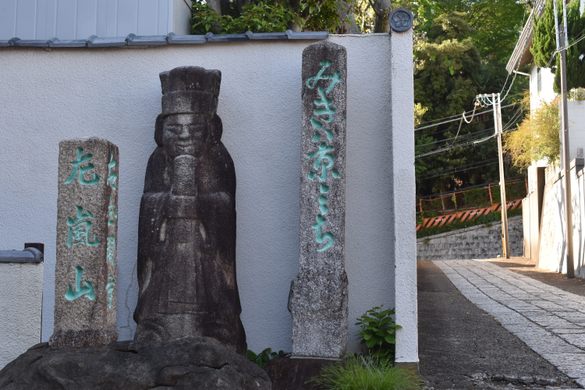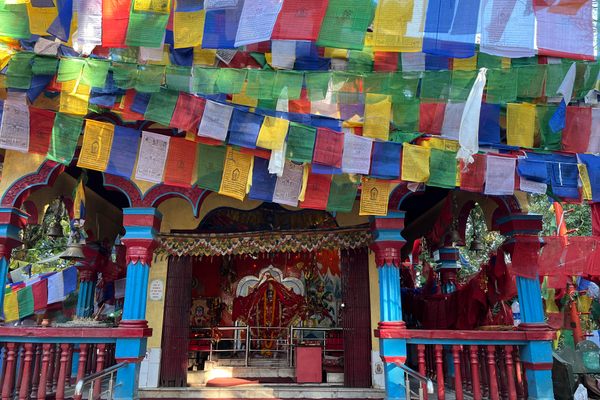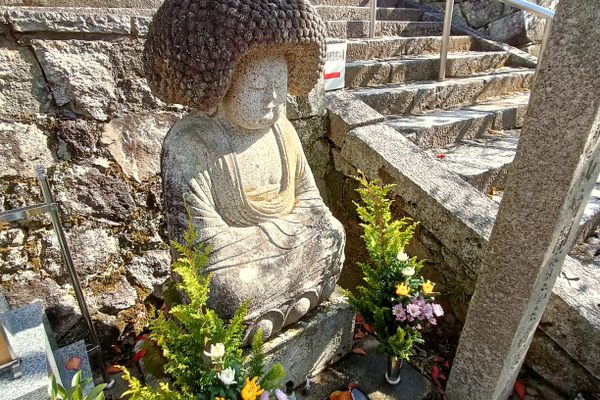Zen’yō-ji Temple
An eclectic temple with Chinese architecture, Korean lion-dogs, an Indian god and a legendary 700-year-old tree.
Setagaya City is one of the 23 special wards of Tokyo, known for its serene greenery and upscale neighborhoods. Curiously, it is also a little exotic, with vaguely Indian-sounding place names such as Setagaya, Sangenjaya, and Yōga, the last of which has etymology that comes from yoga.
Founded circa 1648-1651, the Buddhist temple of Zen’yō-ji in the Noge district of Setagaya takes that quirk to the next level. Eclectic in architecture and full of diverse statues, this lesser-visited temple offers an array of interesting attractions.
From one side, visitors may walk up the stone steps guarded by a pair of haetae, creatures from Korean mythology similar to the lion-dogs at Shinto shrines, but very uncommon in Japan. The grounds are lush with trees, including a kaya or Japanese nutmeg-yew tree that is estimated to be 700 to 800 years old, much older than the temple itself.
According to local folklore, once upon a time, the kind-hearted daughter of a local chieftain saved a mother crab and her baby from drowning in a flooded river. In return, the crab gave the girl a seed, which grew into the tall nutmeg-yew tree. It has given the nickname of “Kaya Temple” to Zen’yō-ji and small sculptures of crabs have been installed at its root. Every winter, to keep it healthy and vigorous, the monks water it with beer and sake.
The main building of the temple is also worth a look. Modeled after the Tōshōdai-ji Temple of Nara, it incorporates the ancient architectural elements of the Tenpyō style. As such, the temple looks a little more Chinese in style than other Buddhist temples in Japan. In front of the main building sits a statue of the Buddha, painted in gold like those in Southeast Asia.
In the garden, there are also statues of the kappa (water goblin), a frog, and a sheep in the style of ancient Korea. Most notably, in a corner of the temple stands a revered statue of Ganesha, just as he appears in India. This is another rarity, as the Japanese Buddhist equivalent of Ganesha takes a different form and his effigies are almost always forbidden from public view.
























Follow us on Twitter to get the latest on the world's hidden wonders.
Like us on Facebook to get the latest on the world's hidden wonders.
Follow us on Twitter Like us on Facebook